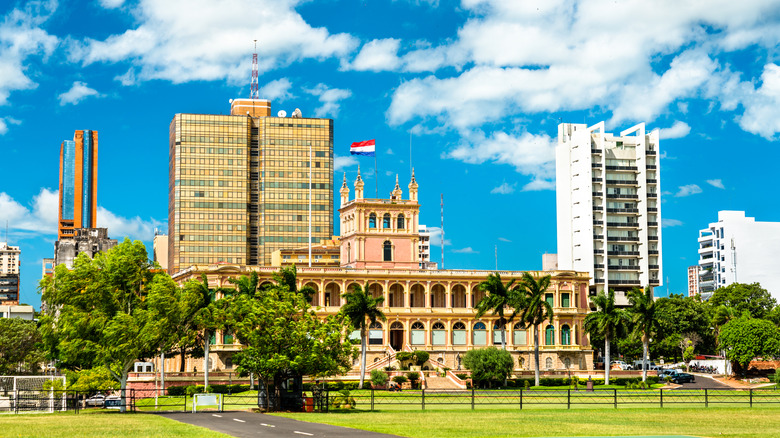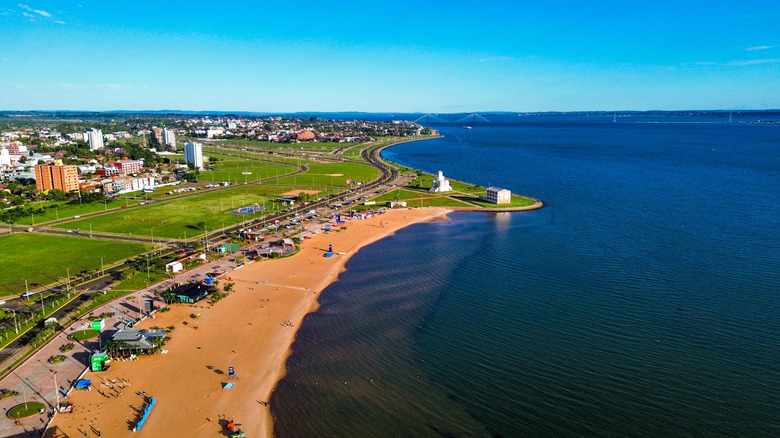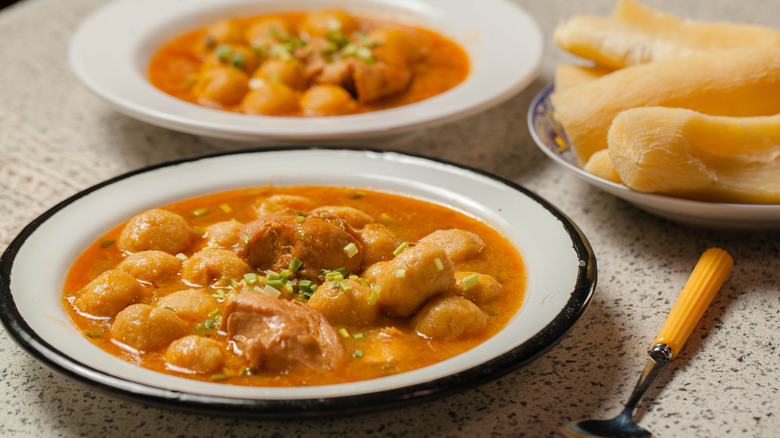'Affordability Is Off The Charts' For Retirees In This Safe, Overlooked South American Country
Portugal and Spain attract lots of attention these days as great European destinations for retiring American expats, with their promise of coastal, vibrant lifestyles. Some have ventured to Central America, where Costa Rica's gorgeous scenery and laidback rhythms also appeal to retirees. But if a nearly 11,000-member Facebook community for expats in Paraguay is any indication, the once-overlooked, landlocked nation in South America is also on the rise, a beacon for those seeking low taxes, a cost of living that's 64.6% lower than that in the U.S., and a welcoming and safe atmosphere. With U.S. prices up more than 24% since the pandemic — for everything from healthcare to groceries — it's hard not to do a double-take at how "affordability is off the charts" in Paraguay, as described in a YouTube video from vlogger Adventure Freaksss.
Where you live in this country of 7 million people will dictate how much you spend. Prices will be higher in Paraguay's up-and-coming capital of Asuncion, home to an international airport, museums, impressive architecture including the Government Palace, shopping malls, restaurants, and adventurous activities like boat rides along the Paraguay River. Here, monthly rents for basic one-bedroom apartments run from $300 to $500. This is compared to rents of around $200 to $400 in the countryside, like in the Cordillera region, about two hours away from Asuncion, where shopping and dining options are fewer but the hilly scenery is a draw. If you're looking to buy property, a new apartment in Asuncion can run about $140 per square foot and $110 outside of the city center compared to a median $220 per square foot in the U.S. (as of 2025). In general, monthly groceries can average $100 to $200 for a single person. Public healthcare is available, and yearly prices for private healthcare insurance can start around $300.
Staying safe in Paraguay
Even more mind-boggling is how Paraguay makes it easy to move. You can establish permanent residency through a staggered system of first obtaining temporary residency by showing proof of a monthly income of around $1,300 or more and providing documents such as a passport and birth certificate in person. Give yourself at least three months for the process. Then, as a temporary resident, you only need to be in Paraguay one day a year. After two years, you can apply for permanent residency, obtain a national ID to sign contracts, and start clocking the tax savings, especially for retirees from the U.S., where high earners can pay up to 37% in taxes. Paraguay's territorial tax system means foreign income and pensions are tax-exempt, and you only need to pay a 10% tax on income generated inside the country.
For residents and visitors, Paraguay is a safe country throughout most of its cities. It's ranked as the fifth-safest country in South America by the 2024 Global Peace Index. The low homicide rate was 6.2 per 100,000 people in 2023, a decrease from 7.9 in 2014, according to data from Statista. That's comparable to the 2023 U.S. rate of 5.9 outlined by the Bureau of Justice Statistics. Peace Corp volunteers in 2023 reported feeling 100% safe where they worked and lived in the non-profit's annual survey. They reported being victims of only six crimes in 2023, compared to 40 in 2019. That said, flaunting your wealth isn't advisable. In busier corridors, there are reports of pickpocketing and purse-snatching. The bigger issue Paraguay faces, according to Interpol, is organized crime, which focuses on smuggling and money-laundering operations. Typically, these illicit activities don't impact expats, but political and bureaucratic corruption exists. Travelers to Asuncion in 2023 reported police officers threatening them with traffic tickets and seeking bribes.
Food and family are a way of Paraguayan life
What's day-to-day life like in Paraguay? With a location in the Southern Hemisphere, summers are hot and humid between December and February, when residents head to river beaches along the Paraná River. First-world residents should consider that Paraguay is a developing country that is making lightning-fast progress. In 2003, the poverty rate was 51%, plummeting to 20.1% last year. Beef and soybean exports are helping fuel the economy, and the country is trying to find its democratic footing after weathering a tough history of dictatorship, a vice president's assassination, and corruption indictments against two presidents.
Such headway, however, hasn't accelerated Paraguay's pace of life. People feel safe and relaxed here and as such, no one seems to be in a hurry, adopting a tranquilo attitude, in contrast to Anglo-American cultures. There are drawbacks to this — for example, a case in the judicial system, which residents say is rife with corruption, can drag on for years. Securing health appointments in the public sector can take a while. But if you're late for a dinner date, no worries. Your friend is probably running behind as well.
Indeed, meet-ups and coffee dates are common in Paraguay. Most of the country's residents are Mestizo, a mix of European and Native American peoples, who speak a mix of Spanish and Guaraní, so brush up on your language skills. The culture prizes time spent with family and friends sharing food, including hearty soups like vori vori, and steak sandwiches called lomitos. If you haven't tried it yet, acquaint yourself with yerba mate, the caffeinated herbal tea that's a national drink. And if you're not sold on this way of living, you can check out the slightly pricier, Central American option of Panama, named the best place abroad to retire in 2025.


